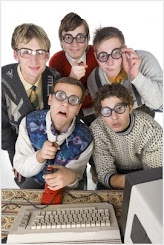0
Another day, another, erm, display
RS are good.
Seriously. Their customer service is excellent. I ordered a new display on a whim last night at about 4.30pm. By 10am this morning, DHL were knocking on the door with a parcel. There were no silly delivery charges or anything like that - £9+VAT and the next day, you've got yourself a GLCD display!
This one has just 18-pins, and a load of onboard capacitors, resistors and stuff, so although there are cheaper displays available, they all seem to need a load of capacitors, external negative voltage and so on. This one - according to the datasheet - is nice and easy to interface with.
It's all theoretical at the minute as I've spent most of today trying to get the display connected up to my breadboard. The pads on the left-hand side are arranged in two rows of nine, rather than a nice, easy, single row of 18 pins.
I've added some header pins and the spacing is perfect for attaching a ribbon cable, just like the ones you find on the back of a floppy disk drive, or an old hard drive.
The ribbon cable fits snugly and after testing for continuity between each pin and the end of the cable, it seems that all my dry joints have been fixed and we're ready to go!

Except once again my soldering skills have let me down. I'm really struggling getting the other end of the ribbon cable onto any kind of connector that I can use with my breadboard. So in theory, my lovely new GLCD display is perfect for my ScoreSure Golf Pro device, but in practice, I've no idea!

Seriously. Their customer service is excellent. I ordered a new display on a whim last night at about 4.30pm. By 10am this morning, DHL were knocking on the door with a parcel. There were no silly delivery charges or anything like that - £9+VAT and the next day, you've got yourself a GLCD display!
This one has just 18-pins, and a load of onboard capacitors, resistors and stuff, so although there are cheaper displays available, they all seem to need a load of capacitors, external negative voltage and so on. This one - according to the datasheet - is nice and easy to interface with.
It's all theoretical at the minute as I've spent most of today trying to get the display connected up to my breadboard. The pads on the left-hand side are arranged in two rows of nine, rather than a nice, easy, single row of 18 pins.
I've added some header pins and the spacing is perfect for attaching a ribbon cable, just like the ones you find on the back of a floppy disk drive, or an old hard drive.
The ribbon cable fits snugly and after testing for continuity between each pin and the end of the cable, it seems that all my dry joints have been fixed and we're ready to go!

Except once again my soldering skills have let me down. I'm really struggling getting the other end of the ribbon cable onto any kind of connector that I can use with my breadboard. So in theory, my lovely new GLCD display is perfect for my ScoreSure Golf Pro device, but in practice, I've no idea!
















